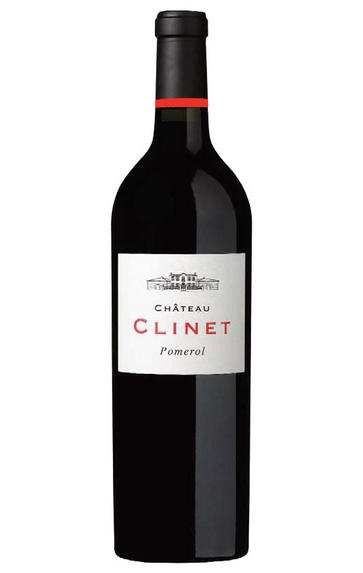
2021 Château Clinet, Pomerol, Bordeaux
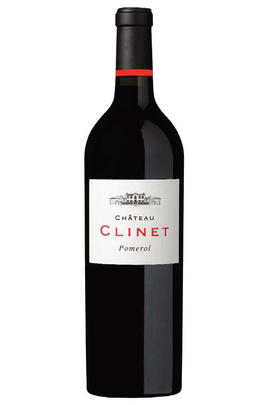
Critics reviews
The 2021 Clinet is a blend of 75% Merlot and 25% Cabernet Sauvignon, picked September 27–30 and October 12, respectively, and aged in 80% new oak. It has a well-defined bouquet of blackberry, graphite and light tobacco scents, very Left Bank in style – unsurprisingly, given the contribution of the Cabernet. Medium-bodied and sappy on the midpalate, with pliant tannins and moderate depth, and a lovely touch of black pepper toward the finish. Not a powerful Clinet and certainly far from the style of 15–20 years ago, but there’s a linearity and understatedness about this Pomerol, a freshness that should guarantee it will repay 5–6 years in bottle. This is a very well-crafted Clinet even if I do not rank it as a classic. If it puts on more weight, it may well land at the top of my banded score.
Drink 2028 - 2050
Neal Martin, vinous.com, (May 2022)
This is gracefully handled, sculpted black fruits, with blueberry, plum, truffle and cinnamon spice. A touch of bitter black chocolate on the finish, not the exuberant power of most years at Clinet, but a great handling of the vintage, concentrated but not overly extracted. 38hl/h yield. Tasted twice.
Drink 2026 - 2042
Jane Anson, janeanson.com (May 2022)
Crimson-purple hue. Dark and spicy on the nose and palate. Round and gourmand but fresh as well. Firm tannic frame, the tannins present but ripe adding power and length on the finish. There’s potential here.
Drink 2028 - 2040
James Lawther, jancisrobinson.com (May 2022)
At 75% Merlot and fully 25% Cabernet Sauvignon, the 2021 Clinet contains the highest proportion of Cabernet in the blend (excepting the 2003) since at least the 1980s. Ronan Laborde harvested late, picking into mid-October, to craft a medium to full-bodied, deep and impressively seamless wine evocative of dark berries, baking chocolate, violets and spices. Concentrated and nicely integrated, it is one of the vintage's notable successes.
William Kelley, Wine Advocate (Apr 2022)
Firm, lightly chewy yet creamy tannins. Savory bark and herb notes. Cloves and licorice, too. Medium body with a polished, lengthy and firm finish. Compact.
James Suckling, jamessuckling.com (May 2022)
About this WINE
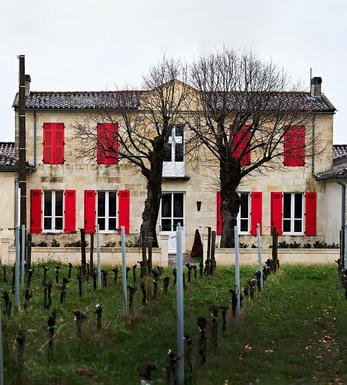
Château Clinet
Château Clinet is a wine estate in Pomerol on the Right Bank of Bordeaux. It is owned and run by Ronan Laborde and his partner, Monique Bailly. Ronan took the helm here in 2004.
The estate’s 11 hectares of vines sit atop the famed Pomerol plateau. The vineyard is planted to a majority of Merlot (75%), which Ronan feels is highly suited to the plateau’s iron-rich clay soils. There is also 25% Cabernet Sauvignon. Though rare in Pomerol, Cabernet Sauvignon has long been an important aspect of Clinet’s character; it once made up 50% of the vineyard here, Ronan reports.
Clinet came to the attention of many collectors when its 1989 vintage received a 100-point score from the critic Robert Parker; it has remained one of Bordeaux’s most sought-after names ever since. Another perfect Parker score followed for the 2009 vintage.
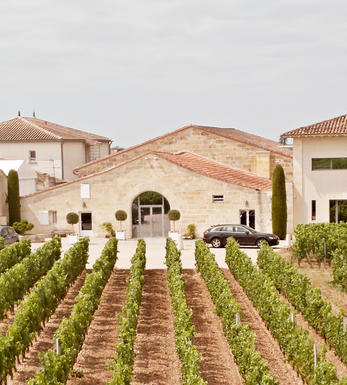
Pomerol
Pomerol is the smallest of Bordeaux's major appellations, with about 150 producers and approximately 740 hectares of vineyards. It is home to many bijou domaines, many of which produce little more than 1,000 cases per annum.
Both the topography and architecture of the region is unremarkable, but the style of the wines is most individual. The finest vineyards are planted on a seam of rich clay which extends across the gently-elevated plateau of Pomerol, which runs from the north-eastern boundary of St Emilion. On the sides of the plateau, the soil becomes sandier and the wines lighter.
There is one satellite region to the immediate north, Lalande-de-Pomerol whose wines are stylistically very similar, if sometimes lacking the finesse of its neighbour. There has never been a classification of Pomerol wines.
Recommended Châteaux : Ch. Pétrus, Vieux Ch. Certan, Le Pin, Ch. L’Eglise-Clinet, Ch. La Conseillante, Ch. L’Evangile, Ch. Lafleur, Trotanoy, Ch. Nenin, Ch. Beauregard, Ch. Feytit-Clinet, Le Gay.
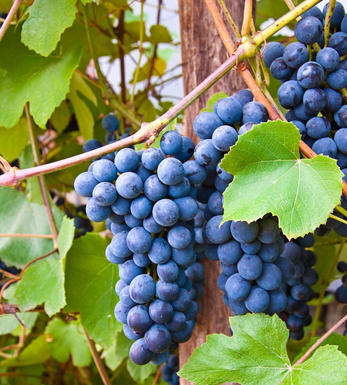
Merlot/Cabernet Franc
Merlot and Cabernet Franc are grape varieties commonly used in Bordeaux-style blends, particularly in the Bordeaux region of France. When these two grapes are blended, they can create a wine that combines the best characteristics of each variety.
Merlot is known for its smoothness, soft tannins, and ripe fruit flavours. It often contributes black cherry, plum, and chocolate flavours to the blend. The grapes are relatively easy to grow and ripen earlier than other Bordeaux varieties, making them versatile for blending.
Cabernet Franc, on the other hand, adds structure, depth, and complexity to the blend. It typically brings aromas of red fruits such as raspberry and strawberry, along with herbal notes like bell pepper and tobacco. These grapes have thinner skins and can be more challenging to cultivate, requiring specific growing conditions to reach their full potential.
When Merlot and Cabernet Franc are combined, the result is a well-balanced wine with various flavours and aromas. The blend often exhibits a Bordeaux wine's medium to full body, along with a smooth texture and moderate tannins. The specific flavour profile can vary depending on the proportions of each grape in the blend and the terroir and winemaking techniques employed.


Buying options
Add to wishlist
Description
Merlot 75%, Cabernet Sauvignon 25%
Clinet’s high proportion of Cabernet Sauvignon is now a bit higher (some Merlot was removed in 2019). Ronan Laborde hopes to reach 50% Cabernet Sauvignon on his deep gravels. Unsurprisingly, Clinet tends to be more muscular, dark and brooding – particularly in recent hot vintages. But the ’21 has allowed contrasts to appear; with the ripe aromas of plum and Asian spice there are leavening notes of slate and tobacco. Enough of Clinet’s usual richer style remains, but there is also some subtlety and weave from the vintage that suits the wine very well indeed. Drink 2028-2045.
Our score: 17.5/20
Berry Bros. & Rudd, April 2022
wine at a glance
Delivery and quality guarantee